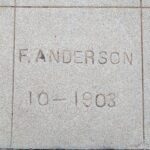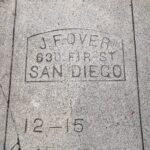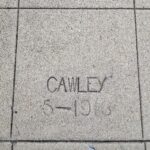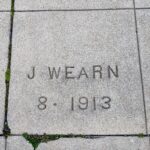Dear Kids and All Readers,
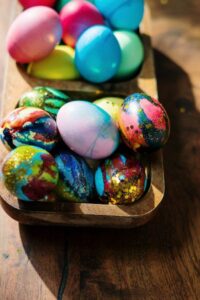 Who hasn’t sought those delicious chocolate-covered, candy-speckled, and rainbow-dyed eggs left by the E.B. in pretty baskets and springtime flowerbeds?
Who hasn’t sought those delicious chocolate-covered, candy-speckled, and rainbow-dyed eggs left by the E.B. in pretty baskets and springtime flowerbeds?
For now, however, please try not to think about chocolate as we shift to the nonedible, nondenominational types of Easter eggs—those scattered in literature and movies.
The formal name for a literary or cinematic Easter egg is an allusion. You’ve probably laughed out loud when finding one of those hidden treasures, tucked into a book or film, that was designed to call something to mind without mentioning it explicitly.
These indirect references—Easter eggs—can be an inside joke that a writer’s or movie’s fan base understands immediately, thereby creating a special bond, as if finders are suddenly part of “The In-Crowd.” Easter eggs can have a broad appeal or be subtle. They are usually somehow significant to the author or filmmaker, which is why they are included.
In addition to inside jokes, sweet Easter eggs can name an author, character, book or movie title, setting or place from another work or time, or a piece of music or work or art, thus linking one to the other; an object or symbol that foreshadows an action in the work or a character trait; a bit of dialogue; a pop culture element; an action that harks to something seemingly and momentarily unrelated; an epigraph; and, an epigram, anagram, puzzle, or set of runes that requires the brainiest of fans to decipher their surprising and often cleverly hidden messages. Sneaky, sometimes snarky, often unexpected—magical!
Sometimes, Easter eggs reveal their hiding places and messages only when we reread a work or rewatch a movie. Those can bring extraordinary ah-ha moments.
One of the most famous and prolific literary E.B.s is Stephen King. Each of his books has a single connection, one to the other. Those of us of a certain age might immediately understand the movie’s Easter egg when in The Shining, a crazed Jack Nicholson peeks through the crack in the door, as he tries to get at his terrified wife, and says, “Here’s Johnny!” Note: That phrase is not in the book, but it duplicates King’s predilection for literary Easter eggs. A “double-yolk” Easter egg, perhaps?
Such revelations of understanding can elicit comic relief, a smile, nod, wink, OMG, or outright guffaw because an E.B. has scattered the eggs successfully.
Disney’s animated movies are replete with hidden egg treasures. Eagle-eye fans have fun hunting and finding them, which are often objects or characters from previous films. In Tangled (2010), there is a wild scene at the Snuggly Duckling Pub. Perched high above the fray in the shadows is Pinocchio (1940)! And Mickeys abound. To see all forty-one Disney Easter eggs, google “Easter eggs in Disney movies,” and check out the Good Housekeeping article from 2020.
According to Samantha Knoerzer’s “The Best Easter Eggs in Literature,” in Lewis Carroll’s Through the Looking Glass, “the book has an acrostic poem that spells out ‘Alice Pleasance Liddell,’ which was the actual name of the real existing girl who inspired the fictional Alice character.” In F. Scott Fitzgerald’s The Great Gatsby, “the beginning of the book contains an epigraph . . . quoted by a man named Thomas Parke D’Invilliers. True fans should recognize the name as a fictional character in Fitzgerald’s third novel, This Side of Paradise.”
My Book 6, Upas Street: Shocking Specter, releasing in Fall 2024, will have Easter eggs of a haunted nature. Maybe that’s where I got the idea for this blog—hmmm.
But writers, be warned! Don’t be a profligate E.B. (or Wild Hare) and scatter eggs too often within a single work. By cracking too many eggs—ha, ha—you will likely lose the element of surprise and perhaps a few of your fans along the way. Wise E.B.s hide effective Easter eggs carefully so they are neither too obvious nor a stumbling block (of broken egg shells).
So, please remember: Too many Easter eggs, hidden willy-nilly, may go undiscovered. Those will turn smelly! And no one wants to read a rotten book.
(Photo Credit: Cottonbro Studio on pexels.com)
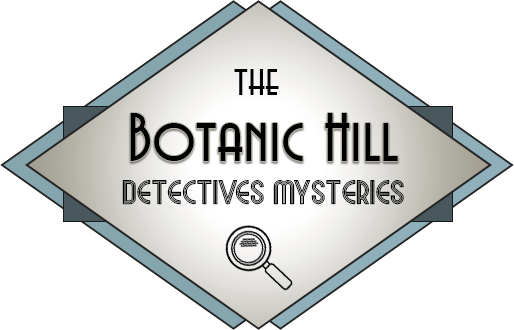








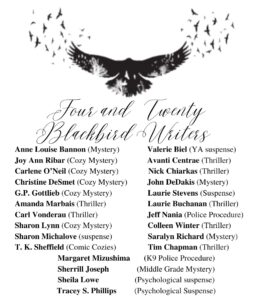
 I was inspired to start decluttering my file cabinet for two additional reasons: 1. Spring Cleaning; and 2. A free paper-shredding community event at a local school last Saturday. I started purging my files, one folder at a time, A to Z, about a month ago during my evening downtime. I got pretty good at zipping through a stack each night.
I was inspired to start decluttering my file cabinet for two additional reasons: 1. Spring Cleaning; and 2. A free paper-shredding community event at a local school last Saturday. I started purging my files, one folder at a time, A to Z, about a month ago during my evening downtime. I got pretty good at zipping through a stack each night. Who hasn’t sought those delicious chocolate-covered, candy-speckled, and rainbow-dyed eggs left by the E.B. in pretty baskets and springtime flowerbeds?
Who hasn’t sought those delicious chocolate-covered, candy-speckled, and rainbow-dyed eggs left by the E.B. in pretty baskets and springtime flowerbeds?